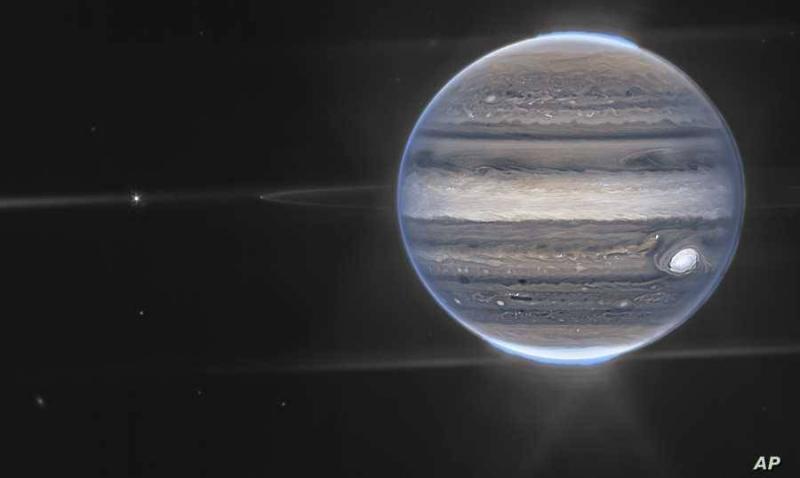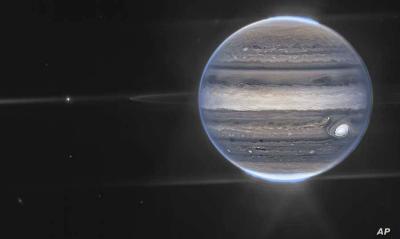The latest and largest space telescope in the world has captured unprecedented details of Jupiter in images that will help scientists understand what is happening on this planet. The U.S. space agency NASA released images taken by the James Webb Space Telescope in July of this year, showing the largest planet in the solar system.
The telescope used its infrared camera to capture unprecedented views of Jupiter's northern and southern lights, massive storms, winds, and auroras. One particularly striking wide-field image shows faint rings around the planet, along with two small moons set against a shimmering background of galaxies.
The infrared images have been colorized using blue, white, green, yellow, and orange filters to highlight specific areas of Jupiter. The James Webb Telescope is considered "the most advanced space telescope of its kind" and was sent into space about seven months ago. The $10 billion telescope is positioned in an orbit 1.5 million kilometers from Earth.
James Webb is equipped with enough fuel to operate for twenty years, which scientists hope will lead to new discoveries.




